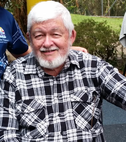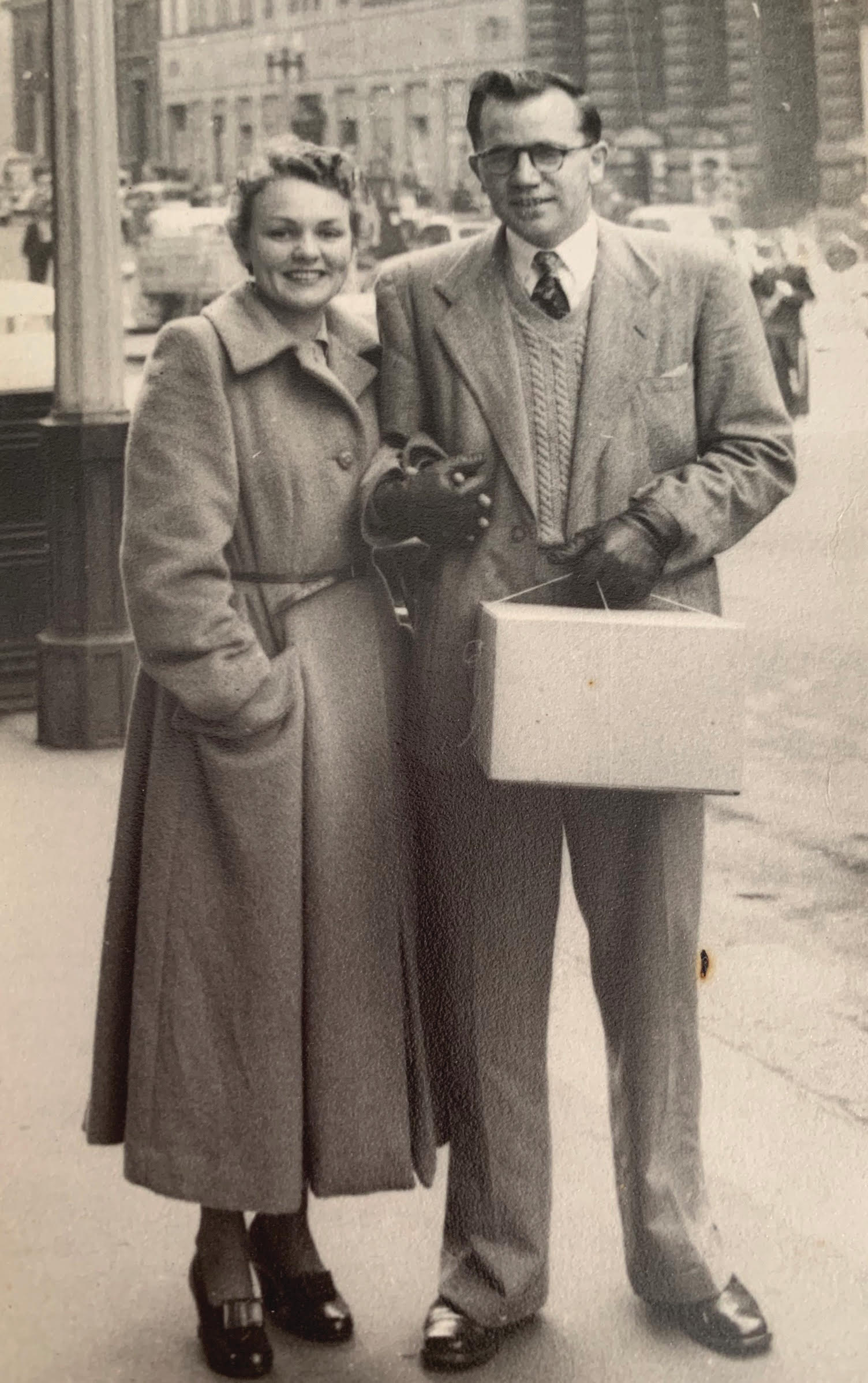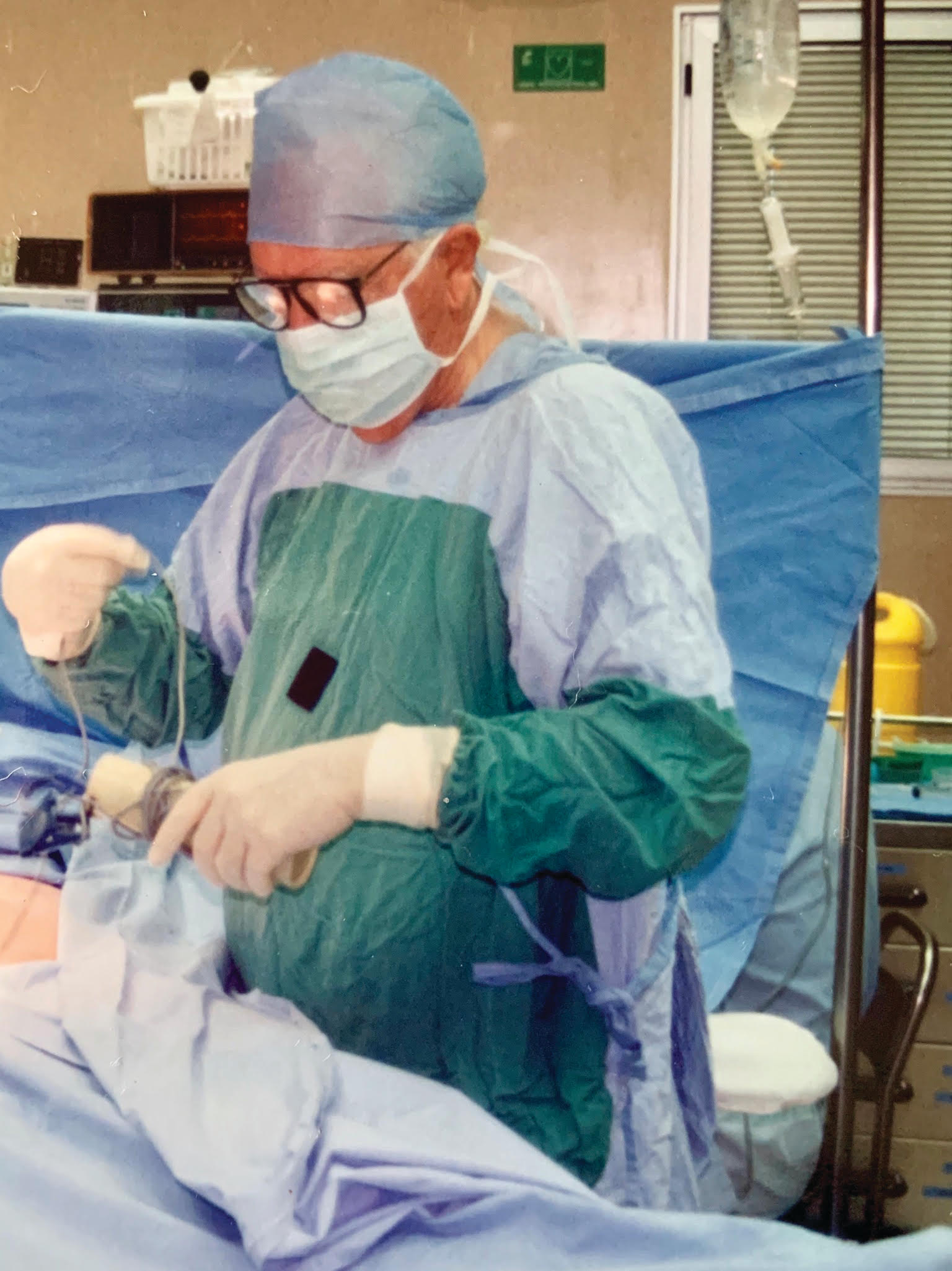Brian Joseph Prove
Full Circle of a Life Lived in Faith.

 Search...
Search...

"He leaves his wonderful and adored wife Julie, his three children,12 grandchildren, and four great grandchildren. A fortunate man indeed."
- Joanna Tait
Keith Gordon Cockburn was lucky to have survived childbirth. On the 7th of July in 1922, he was born breech at home at Tennyson Point on the Parramatta River in Sydney, the youngest of three.
Keith's parents were Scottish immigrants who settled in Sydney. George, a civil engineer who worked for NSW railways building bridges, emigrated to Australia in 1910. His then-fiancée, Annie, joined him in 1914 after three attempts, including one where her ship sank in the Thames.
At the age of six, Keith developed pneumonia with severe pleurisy. He recalled the horror of being held down on the kitchen table as the doctor inserted a chest tube to drain the fluid, without local anaesthesia.
He was eventually admitted to the Royal Alexandra Hospital for Children, where he underwent a thoracotomy to drain the empyema. This was performed under open ether anaesthesia. He remained hospitalised for six months, receiving open ether anaesthetics weekly to replace his chest drain. He vividly remembered the nausea and vomiting that ensued. This experience profoundly affected his life, resulting in a life-long fear of anaesthesia and his determination to become a doctor.
On completing primary school, Keith qualified and was accepted into the prestigious Fort Street Boys High School. Keith was a good student with a passion for sport, playing water polo and rugby union. He completed school with honours in mathematics and physics, and was subsequently admitted to the University of Sydney in 1940 to realise his childhood ambition of studying medicine.
Keith volunteered for the army, but call-up was withheld until the completion, or failure, of his medical degree. In 1941, he joined the Sydney University regiment. He was attached to the 8th Field Ambulance, reporting for duty during university holidays.
Keith's graduation in medicine was surrounded by tragedy, with the sinking of the yacht 'Robin Mae' in 1945, where several of his colleagues drowned. The sole survivor was dux of the year. The six-year medical course was completed in five, as there were no holidays to separate the terms, due to the Second World War.
After completing his MBBS degree in 1945, he moved into residency at the Prince Alfred Hospital in Sydney. It was there, at the age of 22, he had his first alcoholic drink. With the cessation of the Second World War in 1945, Keith was not offered a 2nd year position, as all 2nd year placements were filled by returned servicemen.
Keith worked at the Lismore Base Hospital for eight months, after which he rang the British Medical Association (BMA) in Brisbane (there was no Australian equivalent at that time) and asked if there were any locums available. The voice on the other end of the phone responded, "Can you start tomorrow?"

On 6th December 1946, Keith moved to Brisbane. After completing the temporary placement, he returned to Sydney to start his own practice, but this was short lived. The Brisbane-based GP, for whom he had done his most recent placement, offered a partnership which included 200 confinements a year. This doctor was Dr Kurt Aaron, marking the beginning of a long and lasting friendship.
On 23rd February 1950, Keith met the love of his life, Juliette, to whom he was devoted. They married in 1950.
Keith was one of two inaugural registrars appointed as the first two training registrars in Obstetrics and Gynaecology in Brisbane. His fellow registrar had to resign, as the pay was insufficient to feed his family, resulting in Keith being on call 24/7. He recalled being sent home by the then Superintendent Dr Roger Salter, having been at work for two weeks straight. On one day, in the post war period, Keith delivered 40 babies!
To become a qualified obstetrician and gynaecologist, Keith needed to travel to England to sit his exams. Keith and Julie travelled by ship, Keith paying for their passage by working as the Ship's Surgeon. They left their nine-month-old son, Keith, in the care of Julie's parents. This heart-breaking decision was deemed necessary, as the trip over, and living in post war Britain, was considered to be considerably unsafe for an infant.
Fortunately, Keith passed the Fellowship examination in England and became a member of the Royal College of Obstetrics and Gynaecology (RCOG) in December 1952. He returned to Australia in April 1953.
Not long after returning, Julie gave birth to their only daughter, Joanna. On the 13th September 1955, Julie gave birth to their last child, William John.
Keith was an extremely busy obstetrician and gynaecologist, performing approximately 350 confinements annually. It was not uncommon for him to have only one hour of sleep at night; he recalled not seeing his children awake for a week.
On many occasions, upon arriving home, he would find Julie waiting at the gates to let him know that the hospital had phoned asking him to return. There were no mobile phones or pagers in those days!
Keith was particularly proud to be a founding member of AGTS,The Australian Gynaecology Travellers Club in 1966. There were initially 3 members from each state, limited so all could fit in one small bus. The group travelled, delivered lectures, and operated in each other's hospitals, a forerunner of the current CPD programmes and peer review.
Later, the club travelled internationally. Keith recalled a meeting in Munich where he met a German gynaecologist, who asked where Keith was from. Surprisingly, the German gynaecologist said he knew where Brisbane was, having been a U-boat captain off the coast of Australia in the Pacific during the war.
Keith was described by his former Registrar, Neville Hacker, now Professor of Gynaecological Oncology at the University of New South Wales, as a brilliant surgeon. Keith, together with Professor Eric Mackay, pioneered Gynaecological Oncology in Queensland in the 1970s. In 1976 Keith and Professor Mackay went to the USA to see what the US training programmes for gynaecological cancer were like. They visited several hospitals including the Mayo Clinic, St Louis, UCLA and Memorial Sloan Kettering in New York. They quickly realised that they needed a fully trained gynaecological oncologist in Brisbane. Keith was largely instrumental in negotiating with the State Health Department to obtain funding for the establishment of a Gynaecological Cancer Centre in Brisbane, which could service the entire State of Queensland.

Keith's remarkable and successful career was acknowledged in 1981, when he was awarded the Order of the British Empire. He became President of the Australian Council of the Royal College of Obstetricians and Gynaecologists (RCOG) (the first Queenslander to do so), Treasurer of the RCOG State Committee and subsequently, an examiner for applicants entering the RCOG.
In the mid 1970's, Keith retired from public obstetrics, eventually retiring from public practice as Visiting Gynaecologist at the Princess Alexandra Hospital in 1982, at the age of 60. In 1992, Keith retired from operative practice, but remained in consulting practice, and surgically assisted for a colleague and dear friend, Dr.Neil Astill, once a week. He retired from both consulting practice and surgical assisting in 2002.
Keith loved to stimulate the minds of his family. At family dinners and celebrations, he would organise puzzles to challenge their minds. Keith would love to present the first line of a limerick and pass sentence on all his aspiring poets! His mind remained acute, with cryptic crosswords and sudokus as his daily homework. Christmas day was always celebrated by his famous cryptic treasure hunts.
He loved golf (a life member, as well as a previous President, of the Brisbane Golf Club), football and cricket. Many a game could have been won if they had only listened to the advice he shouted vigorously at the television!
Keith was devoted to his wife, Julie. He was frequently heard to say; "I just love that woman," until the day he died, one day shy of his 97th birthday.
He leaves his wonderful and adored wife Julie, his three children, 12 grandchildren, and four great grandchildren.
A fortunate man indeed.
Share your own story or eulogy about a loved one, online in a safe environment for future generations. Please click below.
Share their story